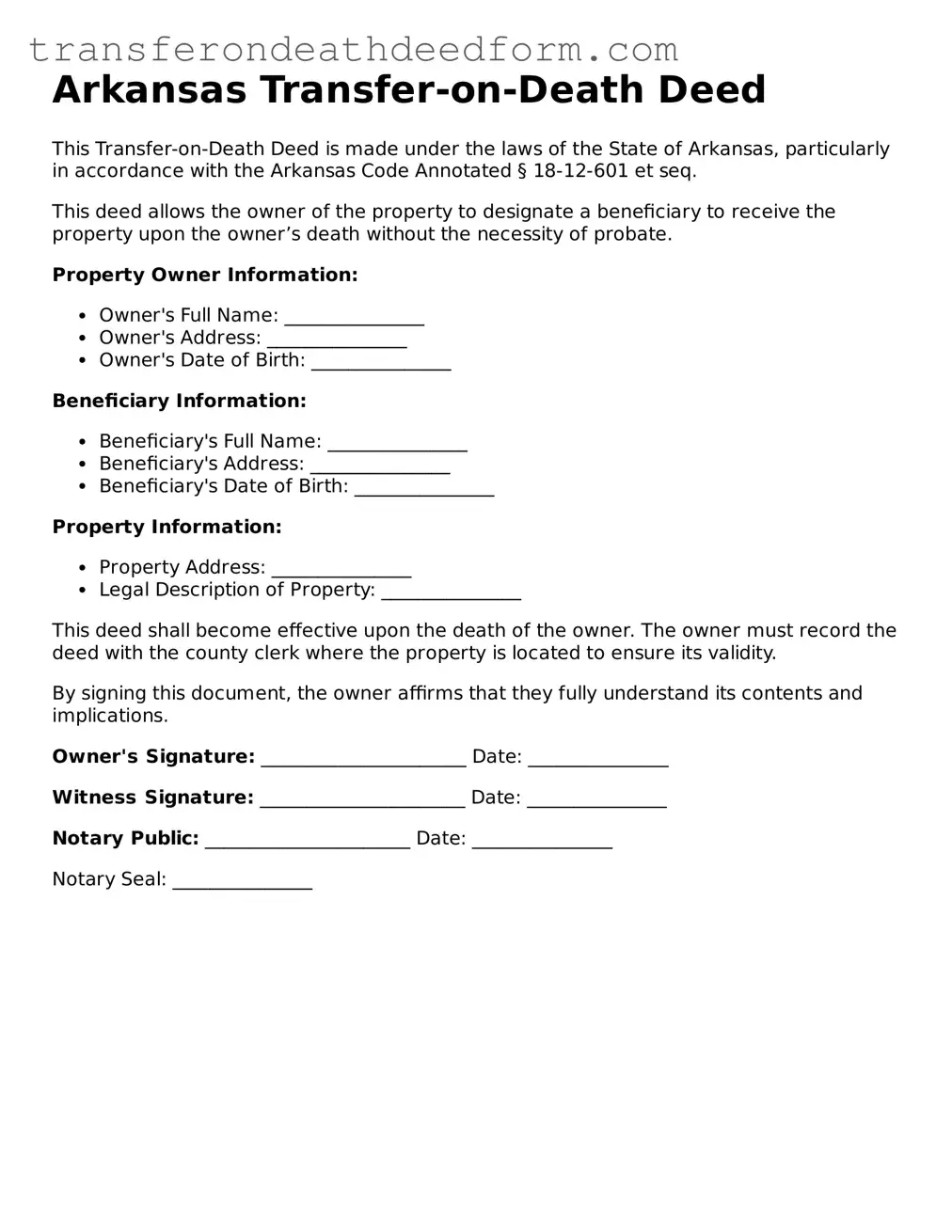Arkansas Transfer-on-Death Deed
This Transfer-on-Death Deed is made under the laws of the State of Arkansas, particularly in accordance with the Arkansas Code Annotated § 18-12-601 et seq.
This deed allows the owner of the property to designate a beneficiary to receive the property upon the owner’s death without the necessity of probate.
Property Owner Information:
- Owner's Full Name: _______________
- Owner's Address: _______________
- Owner's Date of Birth: _______________
Beneficiary Information:
- Beneficiary's Full Name: _______________
- Beneficiary's Address: _______________
- Beneficiary's Date of Birth: _______________
Property Information:
- Property Address: _______________
- Legal Description of Property: _______________
This deed shall become effective upon the death of the owner. The owner must record the deed with the county clerk where the property is located to ensure its validity.
By signing this document, the owner affirms that they fully understand its contents and implications.
Owner's Signature: ______________________ Date: _______________
Witness Signature: ______________________ Date: _______________
Notary Public: ______________________ Date: _______________
Notary Seal: _______________
